Friday, 6 January 2012
EUR/USD: Trading the FOMC Interest Rate Decision
Trading the News: Federal Open Market Committee Interest Rate Decision
What’s Expected:
Time of release: 12/13/2011 19:15 GMT, 14:15 EST
Primary Pair Impact: EURUSD
Expected: 0.25%
Previous: 0.25%
DailyFX Forecast: 0.25%
Why Is This Event Important:
The Federal Open Market
Committee is widely expected to maintain its current policy in December,
and the rate decision could spur a bullish reaction in the U.S. dollar
as market participants scale back speculation for another large-scale
asset purchase program. As Fed officials expect economic activity to
gradually gather pace in 2012, the committee may see limited scope to
expand monetary policy further, and the USD may appreciate further
against its major counterparts as the fundamental outlook for the
world’s largest economy improves. However, as Fed Chairman Ben Bernanke
maintains a cautious outlook for the U.S., the central bank head may
keep the door open to conduct another round of quantitative easing, and
increased expectations for QE3 is likely to weigh on the USD as interest
rate expectations falter.
Recent Economic Developments
The Upside
|
Release
|
Expected
|
Actual
|
|
Consumer Credit (OCT)
|
$7.000B
|
$7.645B
|
|
Pending Home Sales (MoM) (OCT)
|
2.0%
|
10.4%
|
|
Advance Retail Sales (OCT)
|
0.3%
|
0.5%
|
The Downside
|
Release
|
Expected
|
Actual
|
|
Change in Non-Farm Payrolls (NOV)
|
125K
|
120K
|
|
Average Hourly Earnings (YoY) (NOV)
|
2.0%
|
1.8%
|
|
Gross Domestic Product (Annualized) (QoQ) (3Q P)
|
2.5%
|
2.0%
|
The ongoing expansion in
consumer credit paired with the faster rate of private sector
consumption may encourage the FOMC to soften its dovish tone for
monetary policy, and we may see the EUR/USD trade lower heading into the
following year as the central bank conclude its easing cycle in 2011.
However, the Fed may continue to highlight the protracted recovery in
the labor market along with the slowdown in wage growth, and Chairman
Bernanke may show an increased willingness to expand monetary policy in
an effort to stem the downside risks for growth and inflation. In turn,
we may see the EUR/USD reverse course following the rate decision, and
we may see the exchange rate may work its way back above the 50.0%
Fibonacci retracement from the 2009 high to the 2010 low around 1.3500
as market participants increase bets for QE3.
Potential Price Targets For The Rate Decision
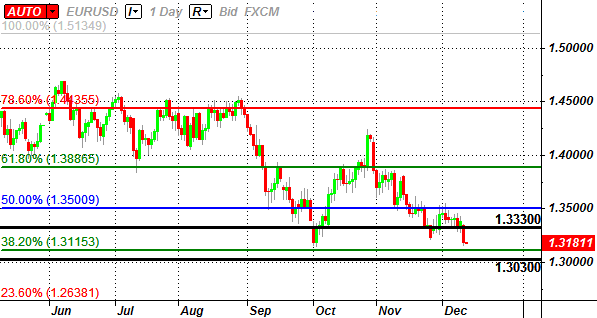
As the FOMC
sticks to its current policy, market participants will be closely
watching the policy statement for cues, and we may see a bullish
reaction in the USD should the central bank talk down speculation for
additional monetary support. Therefore, if the Fed strikes an improved
outlook for the world’s largest economy and pledges to carry out
‘Operation Twist’ in 2012, we will need a red, five-minute candle
following the announcement to generate a sell entry on two-lots of
EUR/USD. Once these conditions are met, we will set the initial stop at
the nearby swing high or a reasonable distance from the entry, and this
risk will establish our first target. The second objective will be based
on discretion, and we will move the stop on the second lot to cost once
the first trade reaches its mark in order to preserve our profits.
On the other hand, the
ongoing weakness in employment paired with easing price pressures may
prompt the FOMC to cast a dour outlook for the region, and the committee
may see scope to expand monetary policy further in order to encourage a
more robust recovery. As a result, if Chairman Bernanke talks up
speculation for QE3, we will implement the same strategy for a long
euro-dollar trade as the short position laid out above, just in the
opposite direction.
Impact that the F.O.M.C Interest Rate decision has had on U.S.D during the last meeting
|
Period
|
Data Released
|
Estimate
|
Actual
|
Pips Change
(1 Hour post event )
|
Pips Change
(End of Day post event)
|
|
NOV 2011
|
11/02/2011 16:30 GMT
|
0.25%
|
0.25%
|
-49
|
-29
|
November 2011 Federal Open Market Committee Interest Rate Decision
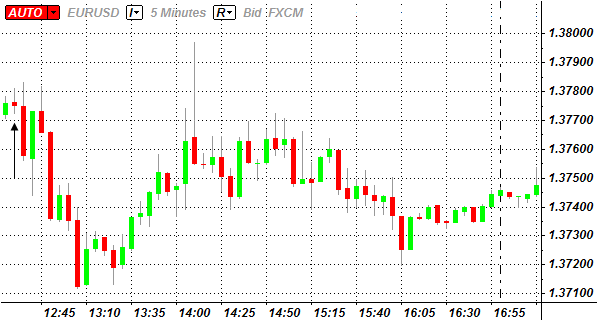
As expected, the Federal
Open Market Committee maintained its zero interest rate policy in
November, but lowered its fundamental forecast for the world’s largest
economy give the ‘continued weakness’ in the labor market paired with
the ‘significant downside risks’ to the growth outlook. In turn, Chicago
Fed President Charles Evans pushed for ‘additional policy
accommodation’ in order to encourage a more robust recovery, while
Chairman Ben Bernanke highlighted a greater willingness to increase
purchases of mortgage-backed securities in order to shore up the real
economy. However, as Fed officials see the recovery gradually gathering
pace over the coming months, the central bank looks as though it will
carry its current policy into the following year, and we could see a
growing rift within the committee as the diminishing risk of a
double-dip recession limits the scope for another large-scale asset
purchase program. Indeed, the initial reaction to the FOMC rate decision
pushed the EUR/USD down to 1.3712, but the USD struggled to hold its
ground following the press conference with Chairman Bernanke, with the
exchange rate settling at 1.3746 at the end of the day.
Euro Drops to Fresh Multi-Month Low Exposing 1.2500 Further Down
- Spain looking to recapitalize; Greece working to secure bailout money
- Rumors of additional E.C.B rate cuts making the rounds
- EUR/AUD cross finally breaks to fresh record lows
- EUR/JPY remains under intense pressure
- French auction results fairly well received
- Aussie data comes in weaker than expected
Ongoing concerns over the
health of the Eurozone and its impact on the broader global macro
economy continue to dominate trade. The latest talk of Spain looking to
recapitalize its banking sector, a German institution recapitalization
and Greece working hard to secure bailout funds, has not inspired any
confidence and we are once again seeing a continuation of risk
correlated liquidation, highlighted by Euro declines. A decent French
auction has also not helped to bolster the Euro at all on Thursday and
the market has broken to fresh multi-month lows towards 1.2800. Rumors
of additional rate cuts have also been making the rounds and this could
put additional pressure on the beleaguered Euro currency. EUR/JPY
continues to drop and has recently moved into the 98.00’s.
- JPY -0.13%
- CAD -0.57%
- GBP -0.63%
- NZD -0.75%
- CHF -0.76%
- EUR -0.81%
- AUD -1.08%
Still, we see a point at
which the crisis intensifies to the east and puts even more pressure on
China, it correlated economies and emerging markets. One such correlated
economy is Australia, and with the EUR/AUD cross rate trading over 85
big figures off its 2008 peak, we anticipate relative weakness in the
Australian Dollar going forward, even against the Euro. Just as we saw
the crisis spread from the US to the Eurozone and the USD start to find
relative bids, so too here, we see the crisis spreading to Australia and
the Euro finding relative bids. The EUR/AUD cross rate has now traded
to fresh +20-year/record lows, and technically, charts are screaming for
a much needed healthy corrective bounce at a minimum. Australian data
overnight has not been encouraging and perhaps this could provide the
initial spark for some form of a bounce in the cross rate.
Looking ahead, US Challenger
job cuts, ADP employment, initial jobless claims and ISM
non-manufacturing are the key releases in North American trade. But with
all the focus on Eurozone deterioration, markets will likely continue
to be influenced by these broader macro themes. Also worth noting is the
potential for downgrades from the rating agencies on European countries
after S&P hinted at such developments in late 2011. Global equity
markets have been rather supported in recent trade, but are starting to
show signs of renewed weakness.
The Euro and risk correlated
assets remain under pressure heading into Friday and at this point,
there appears to be no sign of any relief for these markets. Rumors of
an S&P France downgrade and an incident at a North Korean nuclear
facility have not helped matters, and this weighs on an already stressed
situation on the global macro front, with the Eurozone economy looking
increasingly fragile. The latest suggestion by Greece’s PM that the
country may default in March and the leave the Eurozone has been a
primary driver of Euro selling over the past few hours and disappointing
EZ auction results coupled with talk of recapitalizations have added to
the high degree of uncertainty in the region.
At this point, next key
support for the Euro comes in by the 1.2500 area, and we could see a
test of this level sooner than even we had anticipated. We are also
starting to see a potential breakdown in familiar correlations where USD
performance had been inversely correlated with US economic data
results. Economic data has been quite solid out of the US in recent
trade and the stronger results have actually been inspiring fresh USD
bids. As such, we continue to be very bullish on our outlook for the US
Dollar across the board, and recommend looking to fade other major
currencies against the buck over the coming months. Some of these
currencies include the commodity bloc currencies, highlighted by the
Australian, New Zealand and Canadian Dollars. Looking ahead, all eyes
will be on today’s US employment report.
ECONOMIC CALENDAR
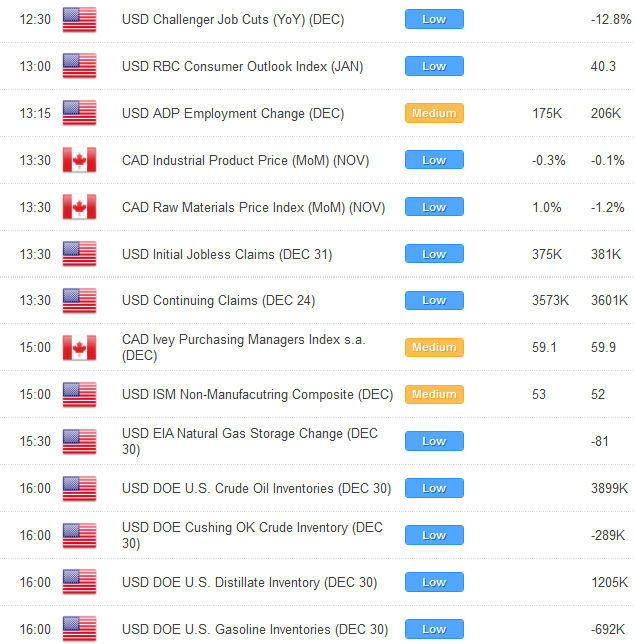
TECHNICAL OUTLOOK
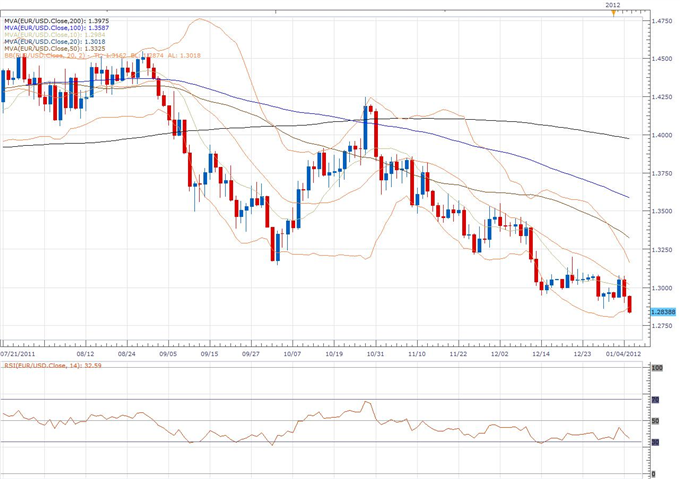
EUR/USD:
After finally taking out the 2011 lows from January by 1.2870, the
market seems poised for the next major downside extension. Overall, we
retain a strong bearish outlook for this market and look for setbacks to
extend towards the 1.2000 handle over the coming months. While we would
not rule out the potential for corrective rallies, any rallies should
be very well capped above 1.3500. Meanwhile, a daily close below 1.2850
on Thursday will accelerate declines.
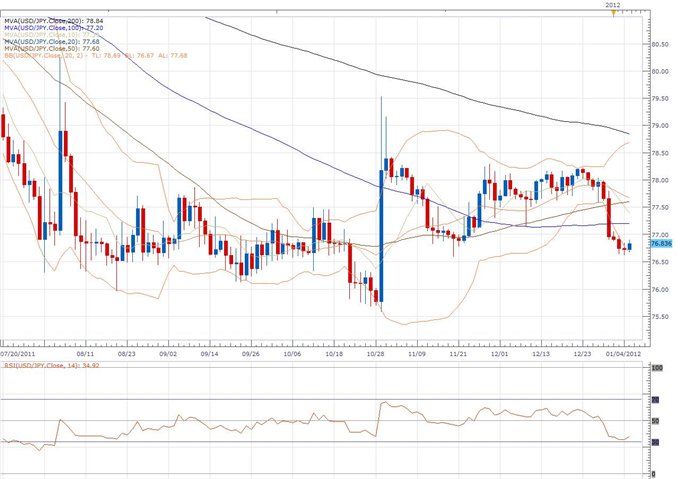
USD/JPY:Despite
the latest pullbacks, we continue to hold onto our constructive outlook
while the market holds above 76.55 on a daily close basis. We believe
that any setbacks from here should be limited in favor of a fresh upside
extension back towards 79.55 over the coming weeks. Look for a break
above 78.30 to confirm and accelerate, while only a daily close below
76.55 negates and gives reason for pause.
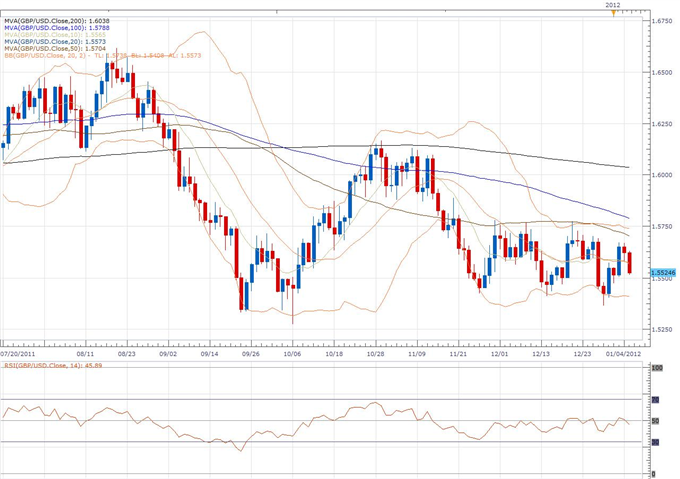
GBP/USD:
Rallies have been very well capped ahead of 1.5800 and it looks as
though a lower top has now been carved out by 1.5780 ahead of the next
major downside extension back towards the October lows at 1.5270. Key
support comes in by 1.5360 and a daily close below this level will be
required to confirm bias and accelerate declines. Ultimately, only back
above 1.5780 would negate bearish outlook and give reason for pause.
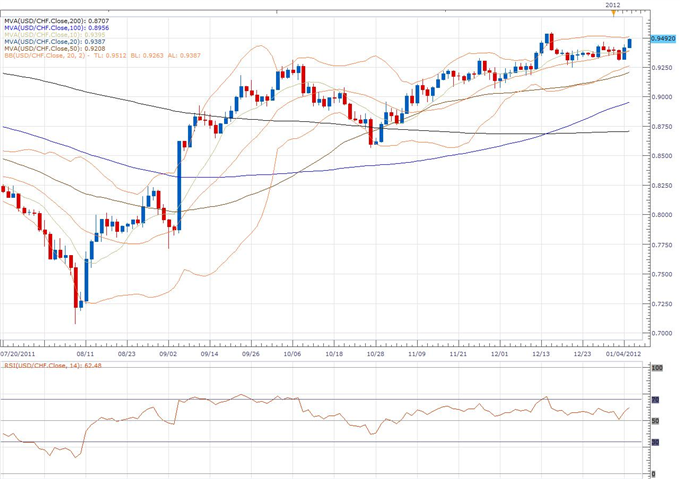
USD/CHF:
The recent break above the critical October highs at 0.9315 is
significant and now opens the door for the next major upside extension
over the coming weeks back towards parity. A confirmed higher low is now
in place by 0.9065 following the recent break over 0.9330, and next key
resistance comes in by 0.9785. Ultimately, only back under 0.9065 would
delay constructive outlook.
Subscribe to:
Comments (Atom)